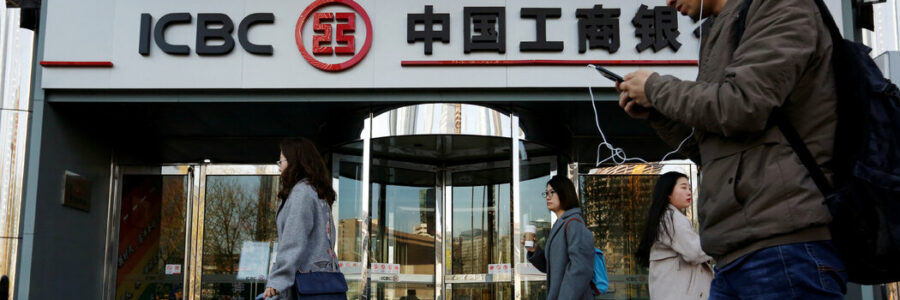
China, Its Economy Flagging, Prods Consumers to Save Less and Spend More
The News
In the latest attempt to boost consumer spending, China’s largest state-run banks lowered interest rates on deposits this week. The rate cuts, the second such reductions since last year, reflect a growing concern that the world’s second-largest economy has not rebounded as strongly as expected after lifting its restrictive “zero-Covid” measures.
Six commercial banks all announced that they had lowered the rate for demand deposits, essentially a checking account, to 0.2 percent from 0.25 percent. The banks cut the interest rates on deposits covering a fixed period of time.
The Industrial and Commercial Bank of China, the country’s biggest lender by assets, cut the five-year deposit rate to 2.5 percent from 2.65 percent and lowered the three-year rate to 2.45 percent from 2.6 percent, according to the bank’s website.
Why It Matters
A reduction in the deposit rates is one lever that policymakers can use to stimulate spending. The hope is that the lower rates will give consumers an incentive to spend or invest money instead of parking their savings in the bank.
The move is an indication that consumer spending, a key driver of economic growth, remains sluggish. After China scrapped its Covid restrictions late last year and reopened the economy, there were expectations that pent-up demand would push consumers to start spending freely — but that has not played out in many sectors of the economy.
Larry Hu, chief China economist at the finance firm Macquarie Group, said the change in deposit rates “paves the way for more easing measures.” He added that the People’s Bank of China, the country’s central bank, may lower the benchmark lending rate or take other steps to stimulate the economy in the coming months. Lowering how much banks pay out on deposits can offset some of the financial pressure when China’s central bank lowers the lending rate, he said.
Background
China has predicted that its economy will recover from one of the slowest years of growth in decades last year and that gross domestic product will grow at around 5 percent in 2023. But economic weakness continues to persist.
In the first three months of the year, China’s economy grew at 4.5 percent, helped by a pickup in spending on dining out and luxury goods. But the outlook appears less promising. China’s second-quarter gross domestic product figures are expected to be announced next month.
The youth unemployment rate is at a record high. The real estate market, a critical sector of the economy for investment and job creation, continues to slump with little sign of a recovery on the horizon.
Betty Rui Wang, senior China economist at the Australia-based bank ANZ, said confidence in the economy is weak across Chinese households and private-sector businesses. She said post-Covid demand helped to push the economy in the early part of the year, but there have been signs that May was a turning point.
“It’s losing momentum,” said Ms. Wang.
What’s Next
Many economists and analysts are expecting a host of new stimulus measures to be announced after next month’s meeting of the Politburo, the Chinese Communist Party’s top decision-making body.
Some new efforts are already rolling out. The Ministry of Commerce said on Thursday that it was starting a campaign to spur more automobile sales. Spending on cars, especially electric vehicles, had been a bright spot in recent years, helped by government subsidies and tax breaks. But as Beijing has rolled back some of those measures, car sales have slowed.
The ministry said it would support policies to bolster the sale of new cars. It said, for example, that it would expand electric-vehicle charging infrastructure in rural areas to make it more practical to bring the technology to the countryside.
Li You contributed research.
Daisuke Wakabayashi is an Asia business correspondent for The Times, based in Seoul. @daiwaka
Source: Read Full Article
